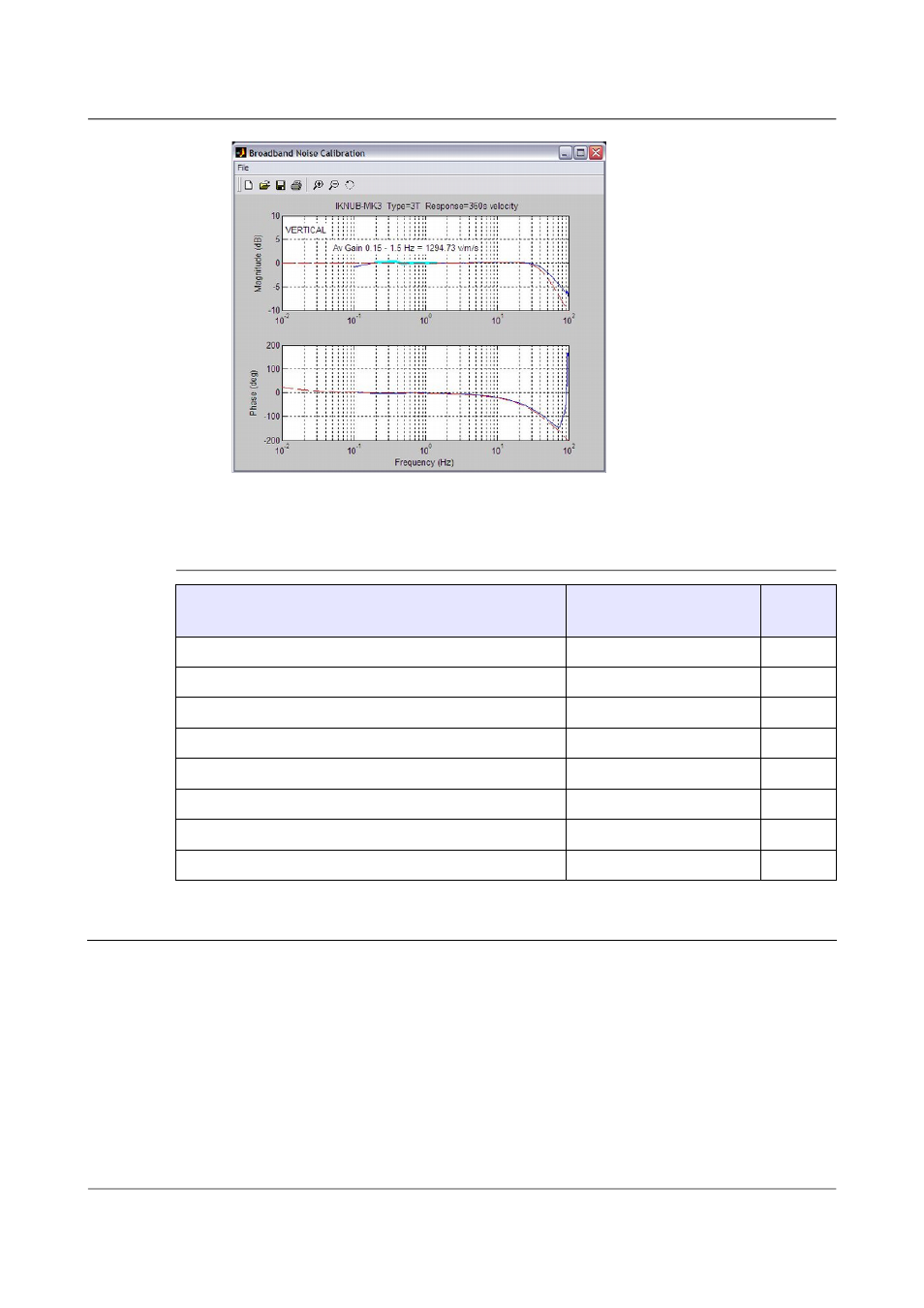4 the coil constant – Guralp Systems CMG-3ESPCD User Manual
Page 37

CMG-3ESPCD Digital Broadband Seismometer
Calibrating the 3ESPCD
The bbnoisecal script automatically performs appropriate averaging
to reduce the effects of aliasing and cultural noise.
4.3.1 Sensor response codes
Sensor
Sensor type code
Units
(V/A)
CMG-3T or 3ESP, 30 s – 50 Hz response
CMG3_30S_50HZ
V
CMG-3T or 3ESP, 60 s – 50 Hz response
CMG3_60S_50HZ
V
CMG-3T or 3ESP, 100 s – 50 Hz response
CMG3_100S_50HZ
V
CMG-3T or 3ESP, 120 s – 50 Hz response
CMG3_120S_50HZ
V
CMG-3T or 3ESP, 360 s – 50 Hz response
CMG3_360S_50HZ
V
CMG-3TB/3V/3ESP borehole, 30 s – 50 Hz
CMG3B_30S_50HZ
V
CMG-3TB/3V/3ESP borehole, 100 s – 50 Hz
CMG3B_100S_50HZ
V
CMG-3TB/3V/3ESP borehole, 120 s – 50 Hz
CMG3B_120S_50HZ
V
4.4
The coil constant
The feedback coil constant K is measured at the time of manufacture, and
printed on the calibration sheet. Using this value will give good results at the
time of installation. However, it may change over time. The coil constant can
be determined by tilting the instrument and measuring its response to gravity.
To do this, you will need apparatus for measuring tilt angles accurately.
1. Measure the acceleration due to gravity, g, at your location.
2. Tilt the instrument slightly, and measure its attitude and the gain of the
mass position output for the component you wish to calibrate.
37
Issue B - November 2013
